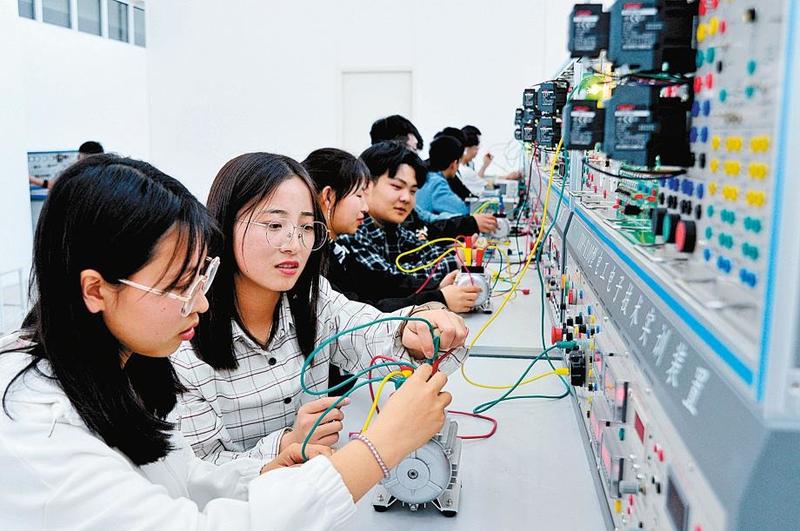 Students at a vocational school study practical electronics in Handan, Hebei province, in April. (PHOTO / XINHUA)
Students at a vocational school study practical electronics in Handan, Hebei province, in April. (PHOTO / XINHUA)
The Ministry of Education has dismissed appeals to abandon the division of students into regular high schools and secondary vocational schools, calling the latter an important part of the country's high school education system.
In China, all middle school graduates need to take the high school enrollment examination to determine which high school they can attend, and the students with lower scores mostly attend secondary vocational schools, leading to social stigma being attached to such schools.
To alleviate the excessive academic burden on primary and middle school students, there have been suggestions that the division of students be ended, letting all students attend high schools.
According to the latest figures from the ministry, the country had more than 16.6 million students at secondary vocational schools in 2020, accounting for almost 40 percent of the students in high school education.
Chen Ziji, director of the ministry's department of vocational and adult education, said on Wednesday that secondary vocational schools can promote diversified development of students and have played an important role in boosting employment, regional economic development and improving people's livelihoods, so it is "very necessary "to continue the division.
The ministry encourages local governments to determine the proportion of students going to vocational schools based on their development situation and demand, Chen said.
Greater efforts should be made to improve the quality of secondary vocational education by allocating more funds, improving school conditions, and cultivating a batch of high-quality and exemplary secondary vocational schools and disciplines, he said.
In the next three to five years, the country aims to build around 1,000 national-level high-quality secondary vocational schools, he said.
Rather than finding employment after graduation, secondary vocational school students will be encouraged to further their studies at higher vocational schools through independent enrollment tests, Chen said.
The ministry will also select around 10 higher vocational schools offering bachelor degrees to improve the attractiveness of higher vocational education, he said.
It aims to improve the image of vocational education so that more students and parents will choose vocational education and employers will be more willing to hire vocational school graduates, Chen added.
Deng Yunfeng, director of the Shandong Provincial Education Department, said that due to the improved quality of secondary vocational education in the province, 29,500 middle school graduates who reached the threshold scores for high schools chose to attend vocational schools last year, and 17,000 high school students switched to vocational schools.
The province has invested more than 33 billion yuan ($5.2 billion) in building 208 high-quality secondary vocational schools and 296 exemplary disciplines, he said.
A new project expected to cost 9 billion yuan was launched last year to build another 100 high-quality secondary vocational schools and 300 exemplary disciplines, he said.
More than 70 percent of the province's secondary vocational school graduates have chosen to further their studies, Deng said.


